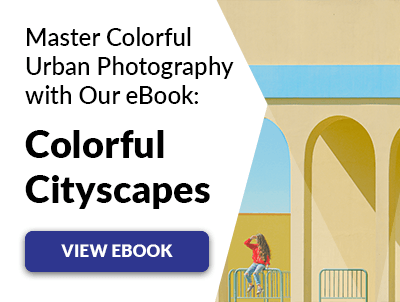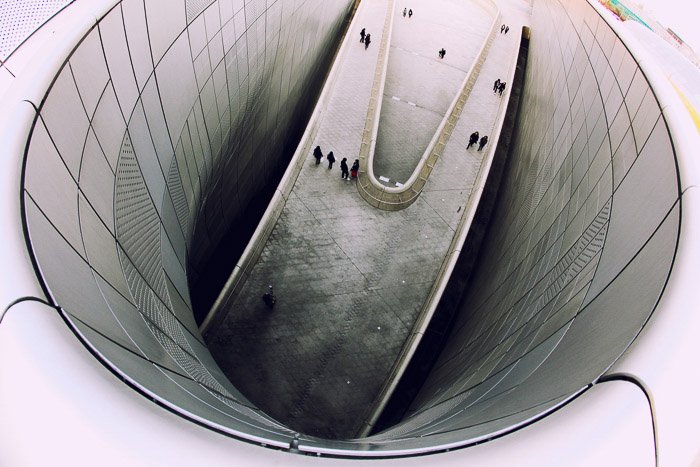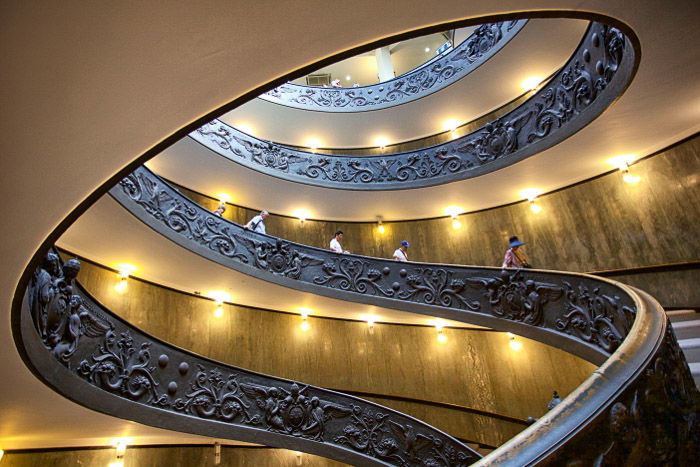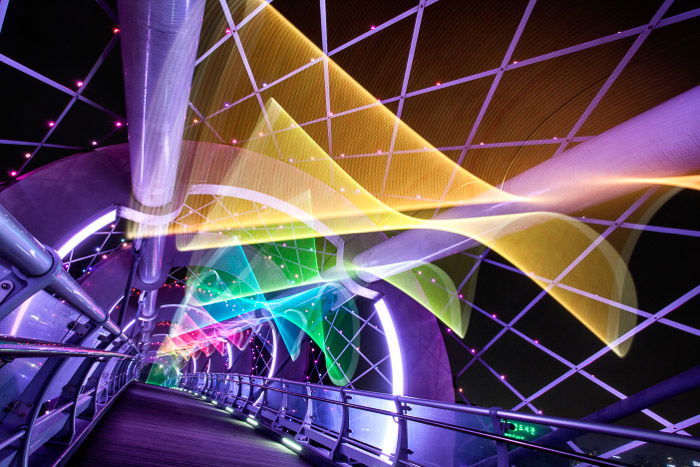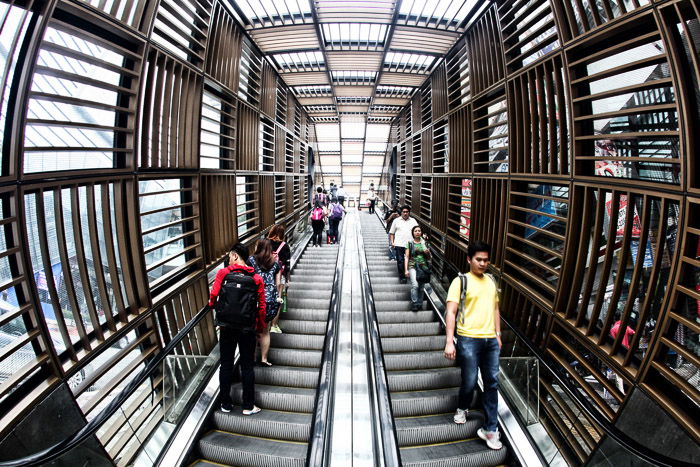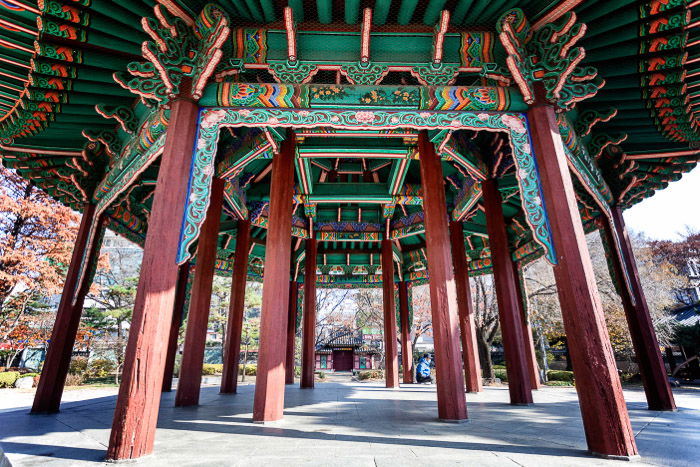[ExpertPhotography is supported by readers. Product links on ExpertPhotography are referral links. If you use one of these and buy something we make a little bit of money. Need more info? See how it all works here.]
Camera for Architectural Photography: The Best Architecture Photography Camera
In this article, we’ll focus on the camera body. And the various advantages a particular body will give you. This article will look at all forms of cameras, catering to all photography levels. The best camera for architecture photography will have a full frame sensor. But there is a case to be made of other camera types as well. Let’s start with the more unconventional camera choices.
5. Smartphone Cameras
Smartphones continue to advance in quality. And Samsung and Apple products lead the way. The ability to use them on a tripod, and even change the lenses makes them more versatile than ever. Added to this are the host of apps you can download. You can accessorize your device for both editing, and photography. So is this the best camera for architecture photography? No. But it has its uses.
Learning angles – You’re yet to buy a larger camera, but enjoy architecture photography. Using your smartphone is a great way to practise architecture photography. Even if you have a bigger camera, you might be out without it. Use your smartphone to record the architecture, and come back later with your other camera. Second camera – Your smartphone can act as a second camera. Use it to capture architectural details as opposed to the wider scene. Photography apps – Your smartphone isn’t only a camera though. It’s also a photography accessory. Need to know where the sun is going to be in the sky? Download the suncalc app and you’ll have that information on hand. Looking for a location? Use one of the many good map apps you can find on a smartphone.
I did not include point and shoot cameras in this article, and the reason is simple. They’ve been made almost redundant by the advance of smartphones. The next step up from smartphones are micro four thirds cameras.
4. Micro Four Thirds Cameras
You now have control of aperture, shutter speed, and can change the lens you’re using. These cameras are also mirrorless, making them smaller and lighter. They’re also less expensive than full frame dSLRs.
3. APS-C dSLRs
Many people’s first dSLR will be one that comes with an APS-C sensor. This is often refereed to as a crop sensor. These cameras do everything a full frame dSLR does. But with a cropped sensor. This cropped sensor affects the camera is several ways.
Focal length – The effective focal length of a 16mm lens designed for a full frame camera on an APS-C dSLR will be 27mm. That’s quite a jump in focal length, restricting your frame. This is a problem for architecture photography. You’ll want to photograph at as wide a focal length as possible. And if you decide to upgrade, you’ll be changing lenses as well as camera bodies. And that’s a lot of money on new gear. Noise – Crop sensors don’t perform as well with techniques like long exposure. The photos will have more noise, which will then make post processing the image that much harder.
Don’t be discouraged though. While the lenses available for this type of camera are not as good as those for full frame cameras, you can still take great architecture photos. The prices are also much cheaper, and the equipment is lighter than a full frame setup.
2. Full Frame Mirrorless Camera
The full frame mirrorless camera is a strong candidate for the best architecture photography camera. Many experienced professional photographers are transitioning over to this type of camera. In terms of brands, Sony and Fuji lead the field here. Both Canon and Nikon have also entered the field. This type of camera could very well be the future of high-end professional cameras. It has many of the advantages of the full frame dSLR, it’s smaller and less heavy. The dynamic range offered by the sensors in these cameras is also excellent. It’s very easy to see why they’ve become popular. One slight concern with them is their durability. They’re a little more vulnerable to the elements. And you’ll need to be a little more careful about how you pack them if you’re moving around.
1. Full Frame dSLR
Full frame DSLRs are still the best architecture photography camera. It’s still a bit ahead of its newer mirrorless counterparts, but this could change in the future. The option to use tilt-shift lenses is really the clincher when it comes to which camera body you should choose. That means a Canon or Nikon full frame dSLR. Both Canon and Nikon have a range of full frame cameras available. And they’re all compatible with the lenses you’ll need to use.
Canon – The Canon 5D MK IV, Canon 6D MK II and the Canon 1D X Mark II are the latest camera bodies available, they’re all great cameras. Nikon – In the Nikon menu there is the Nikon D750, Nikon D810 and the Nikon D5. Nikons tend to be more budget-friendly cameras.
So which of these brands should you get for architecture photography? There is not much difference between them, but Canon makes a slightly better tilt-shift lens. This sways the argument towards Canon. Those looking at full frame DSLRs like this but on a budget can look to the second-hand market. Older models such as the Canon 5D MKII and the Nikon D610 offer great value for money.
What About Lenses for Your Camera Body?
The camera body is only half of the camera. You’ll need a lens or two to go with it. When it comes to architecture photography you’ll want at least a wide angle lens. In an ideal world, you’d get a tilt shift lens to go with that. Is there a case for lenses at longer focal lengths? Yes. For detail photos, or when you can photograph the architecture from a distance those lenses come into play.
Wide Angle Lenses
You’ll need this to capture the whole scene. It’s especially useful when you’re photographing an interior. And you want to capture as much of the room you’re in as possible. Likewise if the structure you’re photographing is hemmed in by surrounding buildings. So let’s look at some of the options.
Sigma – This is a third party manufacturer. Lenses will mount on numerous camera models, including Nikon and Canon. A great lens to use from them is the Sigma 12-24mm f/4 DG HSM Art. Excellent quality with low distortion. The only drawback is that this is a heavy lens. Canon – Canon make some excellent L series lenses. For architecture photography the Canon EF 11-24 f4L is the best you can use. It’s more expensive than the Sigma rival however. Nikon – Nikon also have a great choice of lenses, I recommend the Nikon 14-24mm f/2.8G.
Tilt-Shift Lenses
The ideal setup will be a wide angle, and a tilt-shift lens. You can use the tilt-shift lens when you want to photograph a wide scene without distorting the tall buildings. Some wide angle lenses perform well without too much distortion. But to be sure your lines are straight, you should use a tilt shift. This is where the Canon and Nikon lenses have the advantage.
Canon – The widest focal length for this lens type is the Canon 17mm TS-E f4L. A great lens as you’d expect from Canon’s L series lenses. Nikon – Nikon’s rival to the canon tilt-shift lens is the PC Nikkor 19mm f4E ED. This lens does not offer such a wide focal length, which is a disadvantage for architecture photography.
Conclusion
Now you’re armed with the relevant information. It’s time to put down the cash and buy a good camera for your architecture photography. The best architecture photography camera combination is a full frame dSLR, combined with a good tilt-shift, and wide angle lens. But that’s my opinion. There are other choices, and you may decide to go with another camera setup. In any case, let us know what you shoot architecture within the comments below!

